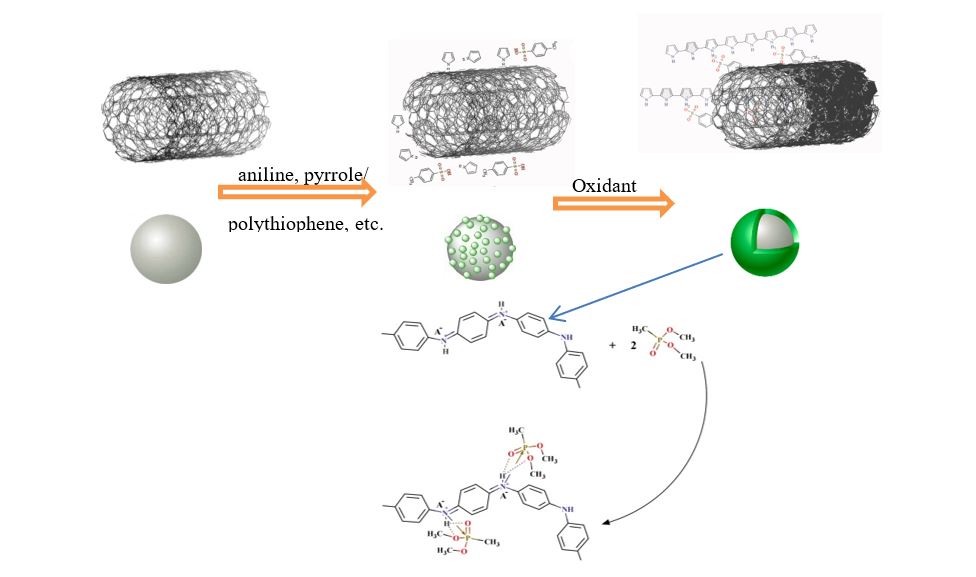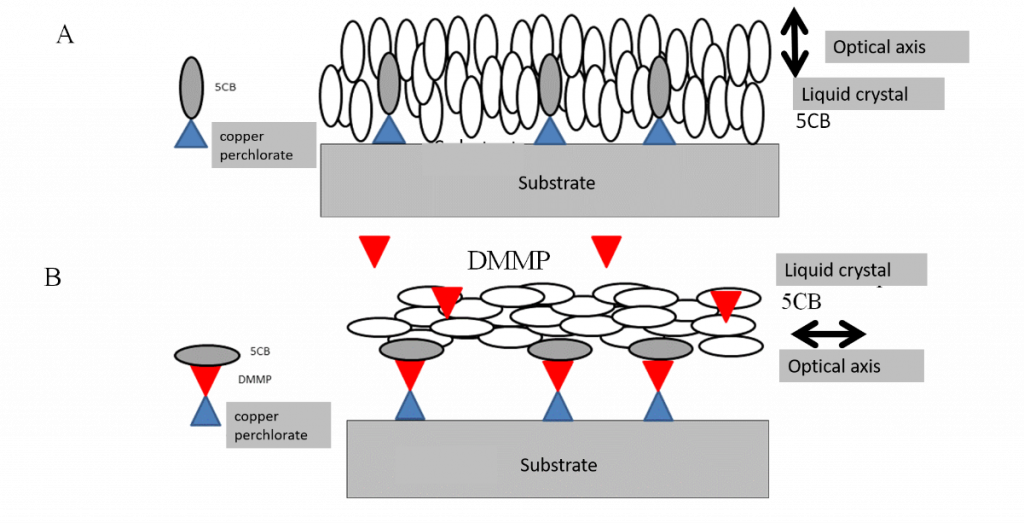Recent terrible chemical attacks of civilian people with nerve agent sarin in Syria (Ghouta area and Khan Shaykhun, 2013 and 2017) and in Great Britain (Skripal’s case, in Salisbury and Amesbury, 2018) clearly prove that currently any soldiers, officials or other people can be poisoned everywhere and, therefore, are not safe even in a seemingly peaceful place. Therefore, the problem of chemical safety of the population is critical for sustainable development. This problem can be significantly mitigated due to a rapid reaction even in the case of a suspicion or expectation on an appearance of the toxic substances in environment. Such reaction, in turn, can be realized through providing these people with alarming and analyzing sensor devices, among which wearable light-weight sensor devices with long operation life would be probably most convenient and effective especially in case of their ability to transmit alarming information to soldiers / first responders / commander/ remote analytical centers. However, there are currently no on market such devices unifying all these important options.

In order to respond this challenge our project has two main objectives:
The first objective is to develop the new smart wearable alarm light-weight soldier badge which is able to detect the toxic gases (nerve agents) simultaneously in alarming sound and digital modes. Miniaturized electronics for the badge with recognition algorithms will be also developed for signal treatment and data processing. In case of the chemical attack the badge will give sound and digital alarm and transmit it via Wi-Fi/Bluetooth protocols to soldiers/first responders/commander.
The second objective is to develop, synthesize and study such critically important components of this badge as new smart nanomaterials (conducting nanocomposites and liquid crystals) which are able to reversibly change their electrophysical properties in the presence of the nerve agents mimics in low concentration range. Due to different mechanisms of sensor responses of these nanomaterials, selectivity of sensor arrays (installed in the badge) to the toxic gases will be improved. Sensitivity of the synthesized nanomaterials will be additionally enhanced by ionic additives.
Accordingly, the main expected outcomes of the project will be:
1. New smart nanomaterials for sensitive, selective and reversible sensing of nerve agents and their simulants.
2. Soldier self-powered lightweight alarm wearable electronic badge for fast signalling to the toxic gases in air.
Working for these main outcomes we expect to reach also the next outcomes:
- Reliability of the toxic gases detection due to using different physical converters (resistive, impedance).
- Wireless connection of soldier badges will facilitate fast alarm communicating between soldiers/first responders.
- Gas absorbing storage-concentrator in the badge unit facilitating precise analysis of the toxic gases in remote analytical centers to identify their nature and origin.
- Express analysis of the composition of the toxic gas mixture by multivariate (statistical) analysis of data from the sensor array in a remote command center.
- Original algorithms for automated recognition will facilitate determination the type of the toxic analyte.
All of these approaches integrated into a single deviсe, will substantially improve the efficiency of early timely poison warning and increase safety of NATO forces in case of the chemical attack.
The developed smart nanomaterials and advanced alarming badge might be used in case of suspected or real chemical hazards and attacks by different NATO sectors, in particular, by the newly formed joint Chemical, Biological, Radiological and Nuclear Defence Centre of Excellence (JCBRN Defence COE) to prevent poisoning of soldiers and to save their lives. Naturally, these project developments can be expanded to first responders / civilian people.
The main advantages of these novel smart nanocomposites and light wearable badge are their easy and fast (few seconds) alarming capability to inform both by sound and wireless connection a soldier or group of soldiers and commander around and in remote places about presence of the toxic gas(es) and their alleged class, durability, repeatability of sensor responses with low detection limit (10 ppb). A distinctive feature of the developed badge will be the possibility of its repeated use. Use of gas absorbing storage-concentrator unit will facilitate precise analysis of the toxic gases in remote analytical centers to identify their nature and origin.







